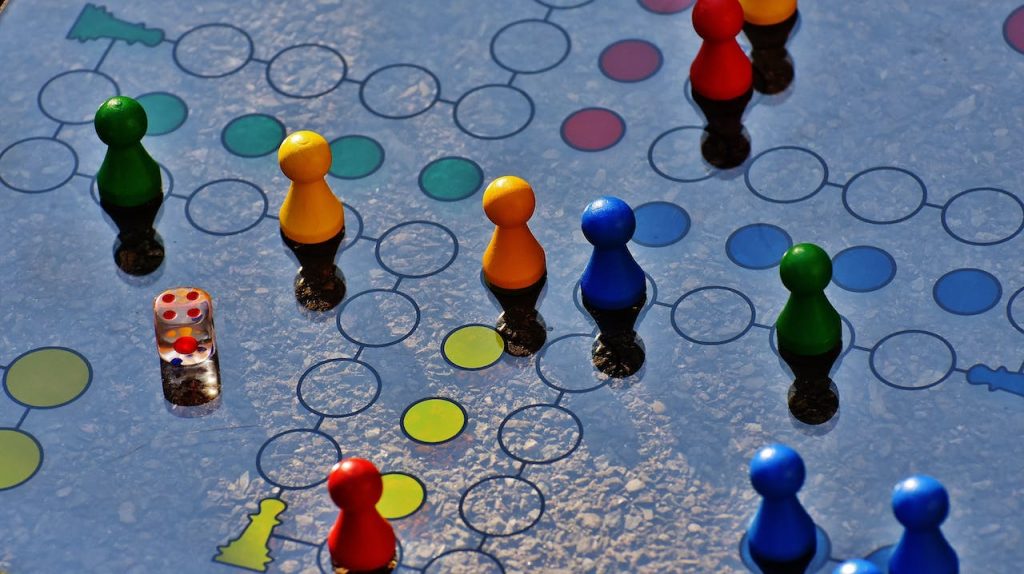No matter where you are on your journey in the nonprofit world, fundraising is the lifeblood that fuels the important, world-changing work you do. Your passion and drive demonstrate why donors should give to your cause, but finding new donors and keeping existing ones takes something more: a solid fundraising strategy.
Your fundraising strategy is the roadmap for your nonprofit, and once you’ve invested the time to develop one, you’ll have an invaluable resource to guide your organization in your fundraising efforts. A thorough, thoughtful strategy takes the guesswork out of the daily operations of your nonprofit. And what’s even better is we’ve compiled some best practices to help you learn how to make one!
Before walking through the steps to create your own, let’s go over the six must-have elements of an effective, reliable fundraising strategy.

The six pieces you need in your fundraising strategy
While no two nonprofits are alike, they all share common goals, like donor connection and retention, memorable fundraising events, and supportive partnerships. You’ll have to decide for yourself how these elements fit into your unique strategy, but the main six elements to consider are:
- Online fundraising capabilities
- Your marketing plan
- Memorable fundraising events
- Donor stewardship
- Major gifts
- Strategic partnerships
Online fundraising capabilities
People spend most of their time online, and more and more donors are choosing online and mobile options to give. If you don’t already have one, an online fundraising solution is a priority for your successful fundraising strategy. While many nonprofits are often strapped for cash, there are many affordable options available. And you’ll save time and resources by letting the software do most of the heavy lifting. An online fundraising solution works even better when paired with our next key element: a marketing plan.
Your marketing plan
Your nonprofit’s marketing plan is the face of your organization. It’s the story you tell potential and current donors. As mentioned above, a lot of this work is done online, in this case, through your social media presence, email campaigns, and website traffic. A successful fundraising strategy uses a multi-channel approach to spread awareness of your mission, announce important event dates, and reach wider audiences. Several online fundraising solutions can be integrated into email campaigns, text-to-donate drives, and more to make your marketing plan more effective.
Memorable fundraising events
Whether it’s a silent auction, a walkathon, or a swanky gala, donors love events! They’re a perfect opportunity to connect with the most important part of any nonprofit: the people in the community. Not only do great events raise money, but they also create lasting memories that inspire long-term relationships with your donors. Many great online solutions can help you plan and manage in-person, virtual, or hybrid events.
Donor stewardship
What is the average donor’s experience with your nonprofit? Do they receive an inspiring receipt after their gift, or do they get something stale and generic? When it comes to communicating with your donors about upcoming events, do they get a customized email that addresses where they are in their giving journey, or do they receive a boring form letter? These are all questions to consider when crafting your fundraising strategy. Making your donors feel appreciated is important and often leads to recurring gifts from dedicated supporters.
Major gifts
According to our friends at Bloomerang, a whopping 88% of dollars raised by nonprofits comes from only 12% of donors. Clearly, major gifts make up an important part of an effective fundraising plan. We’ve mentioned one of the ways to help create a major gift pipeline: donor stewardship. Recurring donors have already shown a dedication to your nonprofit, and that can often translate into major gifts down the line. Additionally, you can look for major gifts from giving societies, philanthropic efforts at for-profit companies, or sponsorships. This brings us to the final key element of a successful fundraising plan: strategic partnerships.
Strategic partnerships
It’s becoming more common to see for-profit companies working with nonprofits. It’s a mutually beneficial relationship; you receive funding and extend your reach while your for-profit business partner gets to interact with your community in a meaningful way. Corporations are often looking for ways to shake off the image of being a faceless business and give back to their communities. Through sponsorships, donation matching, cause marketing, and other efforts, strategic partnerships with businesses create long-term revenue streams to help your nonprofit thrive.

How to create your fundraising strategy
Now that we’ve covered what you need to include in your fundraising strategy, let’s talk about how to actually put it all together! There are eight key steps to creating your fundraising plan. Each step builds on the one before, so this guide will walk you through the process from start to finish.
- Take stock of what you currently have in place
- Choose a software solution that fits your needs
- Set goals…
- … and track them
- Conduct donor research
- Create targeted marketing that tells your organization’s story
- Make giving easy
- Maintain your donorship
Step 1: Take stock of what you currently have in place
Your first step is to take stock of your current fundraising efforts. Think of it as taking inventory; you want to make sure you know what assets and resources you already have so you can figure out what you need. You can break this into a few separate steps:
- Evaluate your current fundraising strategy. Whether you have a rock star plan already in place or are starting from scratch, it helps to look at what you have. What feedback have you received from your donors about your website, past events, or donation forms? Can you use that feedback to improve your donors’ experience?
- Take a look at your social media. What does your social media look like? Have you posted any recent blogs that people are interacting with? Or is your Facebook page a bit out of date? Use social media, an often free resource, to get the word out about your nonprofit.
- Check out similar nonprofits. If you’re feeling a little lost or overwhelmed, take a look at what similar nonprofits are doing for inspiration. There are countless resources on the internet that can help you stay up to date on the latest fundraising trends as well.
- Assess your strengths and resources. No matter the size of your team, you certainly have people who excel in specific areas, and it’s possible you don’t even know it! Maybe one of your volunteers rocks at social media, or another is a whiz at event planning. Find out, and put the aces in their places, as the saying goes!
- Audit your current software. Now is also a great time to look at what fundraising software solutions you have in place. Maybe the answer is “none,” or maybe you have a plan in place but know it can be improved. Ask yourself what you need from your online fundraising software and how it can streamline and improve the important work you do.
Step 2: Choose a software solution that fits your needs
We’ve already stressed how important it is to have an online fundraising solution, but there are many choices out there. Not all of them will fit your nonprofit’s needs. You will want to decide what the right tools are for your goals and plan accordingly. Here’s a list of some of the tools you might want to consider investing in:
- Online donation forms: An online donation form can be a game changer for your nonprofit! It streamlines giving and makes donating a breeze. And you can optimize your form for mobile, where most of your donors spend their time. When was the last time you didn’t have your cell phone on you?
- CRM: Storing, managing, and sorting your donor information is a crucial part of any fundraising strategy. With powerful platforms like Bloomerang, you can create donor segments that allow you to send tailored communications within the various demographics of your donor base.
- Email marketing software: Make sure your email outreach is working as efficiently as possible! With the right email marketing software, you can send targeted appeals to specific audiences, keep donors updated on events, and track crucial metrics like open rates and click-through rates.
- Event planning software: Planning events can be a lot like herding cats! Event planning software can take a lot of the leg work out of hosting your next can’t-miss event. Manage everything from donations to ticket sales to scheduling and more.
- Peer-to-peer fundraising: Many of your donors are already devoted to your cause, and with peer-to-peer fundraising, they can work to raise money on your behalf! There are several great peer-to-peer options out there that support these individual fundraisers along their journey.
- Text fundraising: People are on their phones all the time, which makes text fundraising a no-brainer! Simple and direct, text fundraising software is a great addition to your fundraising strategy.
- Volunteer management: Volunteers are the engine that drives your nonprofit, so you’ll want to invest in a system that helps you manage them effectively. The time you save letting software do your scheduling will pay off instantly.
Step 3: Set goals…
Now that you’ve got your tools in place, it’s time to set your goals! You probably already know about SMART goals, but let’s refresh your memory. A SMART goal is:
Specific: Instead of saying, “I want to get better at communicating with recurring donors,” say, “My goal is to create a segmented donor database so I can send customized emails to our recurring donors.”
Measurable: Less, “Let’s find more donors,” and more, “Let’s aim to increase our donor base by 10% over last year.”
Achievable: Notice how the example above was a reasonable, but still challenging, goal of increasing the donor base by 10%? Of course, you’d love to increase your base by 100% overnight, but that’s just not going to happen! Make the goal a stretch, but don’t overdo it.
Relevant: Make sure the goal aligns with the strategy you’ve worked so hard to create. What is your nonprofit’s most immediate need?
Time-bound: The example above of a measurable goal is missing one thing: a deadline. Give your goal a time limit to keep a sense of importance. You could say, “Let’s aim to increase our donor base by 10% over last year’s by the end of Q3 2024.” Making the goal time-bound helps keep momentum going forward.
Step 4: …and track them
Once you’ve decided on your goal, you’ll want to keep track of how you’re progressing. There are a wide variety of metrics and key performance indicators (KPIs) available to help you make sense of where your goals are—so many that it can be easy to get lost in the sea of numbers! Here are a few that you might want to consider:
- Donor retention rate: How many of your donors are continuing their support past the first donation?
- New donor acquisitions: How many first-time donors are you seeing from your campaigns?
- Event attendance rate: Are your events sold out or are you still searching for more attendees?
- Average donation growth: Is your average donation growing with your organization or staying the same?
- Email campaign open rates: Are your supporters seeing your emails?
- Social media interactions: Are your posts being seen?
And the list goes on! There is plenty of data out there, and your online software can help you track the metrics that matter to you.
Step 5: Conduct donor research
You’ve got your goals set and your systems in place. Now it’s time to find your donors, especially those who might be more likely to contribute a major gift, as we discussed earlier. A successful fundraising strategy utilizes prospect research to find major gift sources. Prospect research focuses on three indicators:
- Wealth markers: high-income jobs, real estate holdings, stock holdings
- Affinity markers: personal connections, past gifting, political donations
- Propensity markers: frequent fundraising event attendees, served on boards
These records are available to the public, so you can collect the information yourself. However, it’s no small endeavor to track all these records down, and it can take valuable personnel resources to do it correctly. Another option is a consultant-led major donor research service, such as DonorSearch.
Step 6: Create targeted marketing that tells your organization’s story
Once you know who you’re trying to talk to, it’s easier to craft personalized, targeted marketing campaigns. Segmenting your audience, as we mentioned earlier, helps you tailor your messages in several ways. For example, you may want to reach out to donors who have previously given but have stopped in the past year. You can craft an email for that specific audience that shows the good work your organization did with their gift, thank them for their help in the past, and remind them of a new goal you’re trying to reach.
Along with email campaigns, your social media presence and website should also be key elements of your marketing strategy. Ensure they’re cohesive with any branding your nonprofit uses and that they all tell your nonprofit’s story.
Lastly, you can use your marketing campaigns and social media posts to help make giving easier by sharing the link to your donation page.
Step 7: Make giving easy
If you’ve invested in online fundraising software, you’re already well on your way to completing this step. So many donations happen on the spur of the moment. A donor sees a post on Facebook or reads an email from your organization and, in that moment, is compelled to give. How quickly can they get to your donation page from that inspiration? Obviously, the faster the better, so be sure to make it as easy as possible for your donors to give.
Some things to consider:
- Is your donation form easy to find on your website?
- How easy is it to navigate your giving page?
- Does your donation form translate well to mobile devices?
- How current is your website, and are there any dead links on your home page?
- Does your text-to-give campaign remind donors who haven’t finished their transaction to complete their donation?
The fewer obstacles that stand between your potential donors and the “send” button, the better!
Step 8: Maintain your donorship
You’ve put in all this hard work to create your plan, attract donors, and get the word out about your awesome nonprofit. Now, ensure that you treat your donorship like the asset it is! As mentioned earlier, one of the most important elements of your fundraising strategy is attention to donor stewardship. Regularly showing your donors appreciation through things like personalized thank-you emails and other segmented outreach helps build long-term relationships.
To make your outreach more successful, you’ll also want to make sure you’re practicing good donor database hygiene. You can achieve this by:
- Regularly updating your donor database
- Remove incorrect or duplicate entries
- Establishing a database auditing system that others can easily use
This will also help you keep up-to-date donor segmentations for your targeted marketing efforts.
Final thoughts
An effective fundraising strategy doesn’t have to feel out of reach! There are tangible steps you can take to get there. It’s important to take the time in the onset to really drill down and get a clear idea of what your specific nonprofit hopes to achieve through your fundraising plan. As long as your goals are SMART, your strategy is intentional, and your team is motivated, the sky’s the limit!
Additional resources
- Nonprofit Strategic Planning: Ultimate Guide +7 Examples. Check out these examples for more information on strategic planning.
- How to Create a Fundraising Calendar. Use this guide to create your marketing calendar.
- Cultivating Donor Retention to Grow Your Giving Garden. Download this eBook for more information on donor retention.





